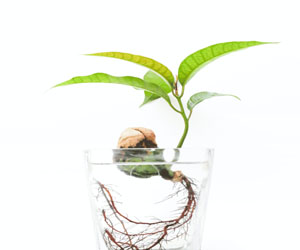


The Art Of Wilderness Living
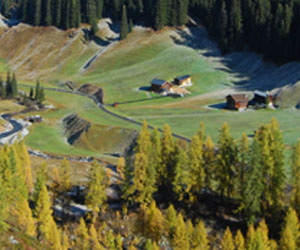
In a world increasingly defined by urbanization, technology, and modern conveniences, the concept of wilderness living represents a stark departure from the ordinary. It evokes images of rugged, self-reliant individuals who have chosen to call the untamed wilderness their home. Wilderness living is not just a lifestyle; it's a testament to human adaptability and a deep connection to nature.
Wilderness living is all about embracing the raw and unspoiled natural world. It involves choosing to reside in remote, unpopulated areas, often far from the amenities and comforts of modern civilization. Those who opt for this lifestyle build their homes, forage for food, and harness the elements to survive. It's a challenging yet rewarding way of life that allows individuals to experience a profound sense of freedom, self-sufficiency, and harmony with nature.
One of the fundamental aspects of wilderness living is self-reliance. Those who live in the wild learn to depend on their resourcefulness and creativity to meet their basic needs. Whether it's building shelter from natural materials, hunting, fishing, or foraging for food, these individuals rely on their ingenuity and skills to thrive in a challenging environment.
Living in the wilderness requires adaptability, as nature is unpredictable. The ability to respond to changing conditions, from weather patterns to the availability of food sources, is crucial for survival. Wilderness dwellers must be in tune with the rhythms of the natural world, adapting and learning as they go.
The off-grid lifestyle also emphasizes sustainability. Wilderness living encourages the minimal environmental impact by relying on renewable resources, generating one's own energy, and adopting eco-friendly practices. Sustainability is not just a choice but a necessity when living far from the conveniences of the modern world.
Community plays a significant role in wilderness living. While it may seem like a solitary existence, many individuals who choose this lifestyle join like-minded communities, which provide support, shared knowledge, and a sense of belonging. These communities often come together to share resources, build collective shelters, and ensure their collective well-being.
While the concept of wilderness living may seem daunting to some, it offers numerous benefits. It allows individuals to disconnect from the noise and distractions of urban life, finding solace in the quietude of the wilderness. There's a sense of self-discovery and self-sufficiency that comes with learning to live off the land, fostering a deep appreciation for nature and its intrinsic beauty.
Wilderness living represents a unique and compelling lifestyle choice that challenges the norms of modern society. It is a testament to the human spirit's ability to adapt and thrive in even the most remote and challenging environments. While it may not be for everyone, those who embrace wilderness living find a sense of freedom, self-sufficiency, and a deep connection with the natural world that is unparalleled in our increasingly interconnected and technology-driven world.





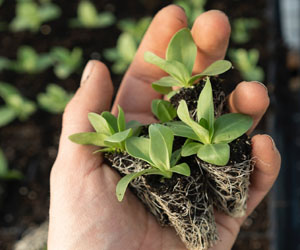
Creative Solutions For Limited Space
 3. Underutilized Spaces
3. Underutilized Spaces
In small homes, every nook and cranny counts. Look for underutilized spaces, such as the area under the stairs, beneath the bed, or inside closets. These spaces can be transformed into storage solutions like built-in shelves, pull-out drawers, or hanging racks.
Cultivating Wellness Through Nature
 Gardening is more than just a hobby; it's a therapeutic and health-enhancing activity that can significantly improve your physical, mental, and emotional well-being. From reducing stress to increasing physical activity, there are numerous ways in which gardening contributes to a healthier, happier life. In this article, we'll explore the many benefits of gardening for health and provide tips for harnessing the power of nature in your outdoor space.
Gardening is more than just a hobby; it's a therapeutic and health-enhancing activity that can significantly improve your physical, mental, and emotional well-being. From reducing stress to increasing physical activity, there are numerous ways in which gardening contributes to a healthier, happier life. In this article, we'll explore the many benefits of gardening for health and provide tips for harnessing the power of nature in your outdoor space.
Stress Reduction: The act of gardening, with its rhythmic tasks like planting, weeding, and watering, has a calming effect on the mind. Engaging with nature and the tactile experience of working in the garden can reduce stress and anxiety levels. The peace and tranquility of a garden offer a therapeutic escape from the demands of daily life.
Physical Exercise: Gardening is an excellent form of physical activity. Activities such as digging, planting, and weeding can provide a full-body workout, improving strength, flexibility, and cardiovascular health. Spending time outdoors in the fresh air and sunlight also promotes vitamin D synthesis and overall well-being.
Healthy Eating: Many gardeners grow their fruits and vegetables, which encourages a diet rich in fresh, organic produce. Homegrown fruits and vegetables are often more nutritious than store-bought alternatives, as they can be harvested at their peak ripeness and consumed immediately.
Mental Well-Being: Gardening has been linked to improved mental health. The sense of accomplishment that comes from nurturing plants and watching them flourish can boost self-esteem and mood. The creative aspect of garden design can also stimulate mental faculties.
A Clean Home And A Clean Conscience
 Environmental Impact: Traditional cleaning products can contain hazardous chemicals that, when washed down the drain, enter water systems and harm aquatic life. Green cleaning helps reduce water pollution and the environmental impact of your cleaning routine.
Environmental Impact: Traditional cleaning products can contain hazardous chemicals that, when washed down the drain, enter water systems and harm aquatic life. Green cleaning helps reduce water pollution and the environmental impact of your cleaning routine.
Reducing Plastic Waste: Many green cleaning products come in recyclable or refillable containers, reducing plastic waste and contributing to a healthier planet.
Sustainability: By opting for sustainable cleaning practices, you contribute to a more eco-friendly world and encourage the development of environmentally responsible products.
How To Get Started With Green Cleaning
Assess Your Current Cleaning Products: Start by taking a look at the cleaning products you use. Identify which ones contain harsh chemicals and consider replacing them with greener alternatives.
Make Your Own Cleaning Solutions: Many effective cleaning solutions can be made using simple ingredients found in your pantry. For example, a mixture of vinegar and water can be a powerful all-purpose cleaner.
Read Labels: When purchasing cleaning products, read labels carefully. Look for certifications like "EcoLogo" or "Green Seal" to ensure that the product meets environmental and health standards.
Choose Reusable Cleaning Tools: Opt for reusable cleaning tools like microfiber cloths and mop heads to reduce waste.
The Art Of Seed Selection
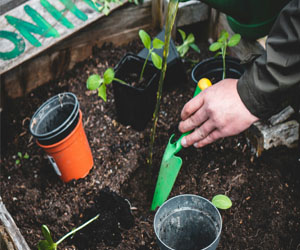 Consider Your Garden's Goals
Consider Your Garden's Goals
Before you dive into the world of seed catalogs, take a moment to consider the goals for your garden. Are you interested in growing vegetables, herbs, flowers, or a combination of these? Are you aiming for a bountiful harvest, stunning aesthetics, or both? Understanding your garden's purpose will help you make the right seed selections.
Open-Pollinated vs. Hybrid Seeds
One of the primary choices you'll encounter is between open-pollinated and hybrid seeds. Open-pollinated seeds are the result of natural pollination and breeding. They tend to be more stable and reproduce true to type, meaning that the offspring will resemble the parent plant.
On the other hand, hybrid seeds are the result of controlled cross-breeding between two different parent plants. They often exhibit desirable traits like disease resistance or improved yield. However, saving seeds from hybrid plants may not produce consistent results in the next generation.
Choosing Varieties
When selecting seeds, you'll have numerous varieties to choose from. Consider factors like:
Climate Suitability: Choose varieties that are well-suited to your local climate and growing conditions.
Growth Habit: Some plants have determinate growth (bushy and compact) while others have indeterminate growth (vining). Select according to your space and support availability.
Days To Maturity: Different varieties have varying maturity periods. Some mature quickly, while others take longer. Plan your garden timeline accordingly.
Disease Resistance: Look for varieties that are resistant to common pests and diseases in your area to reduce the need for chemical interventions.
Flavor And Appearance: Consider the taste and appearance of vegetables and fruits. After all, the end product should meet your culinary and aesthetic preferences.
Quality Matters
It's essential to purchase seeds from reputable sources. Well-established seed companies offer seeds that are more likely to be true to type, have high germination rates, and have been stored properly. When shopping for seeds, pay attention to the seed packets for information on planting depth, spacing, and care instructions.
Cultivating More Than Just Plants
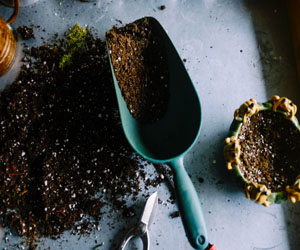 Mental Health Benefits
Mental Health Benefits
Mindfulness: Gardening encourages mindfulness, as it requires you to be present in the moment. The act of nurturing plants allows you to disconnect from daily stressors.
Improved Mood: The visual appeal of a well-tended garden can bring about a sense of achievement and happiness. The act of watching plants grow and bloom is therapeutic.
Mental Focus: Gardening tasks, such as planning and maintaining your garden, require mental focus and problem-solving skills, which can help sharpen your cognitive abilities.
Environmental Benefits
Conservation: Home gardens can promote biodiversity by attracting pollinators and beneficial insects. This contributes to the health of local ecosystems.
Sustainability: Growing your food reduces your carbon footprint by decreasing the need for transportation and packaging of commercial produce.
Education: Gardening offers opportunities to learn about ecosystems, sustainable practices, and the importance of protecting the environment.
Social And Community Benefits
Community Building: Gardening often brings people together. Community gardens create a sense of camaraderie and encourage social interaction.
Sharing: Gardeners often share their surplus produce with friends, family, and the community, fostering a sense of goodwill and generosity.
The Hidden Foundation Of Plant Vitality
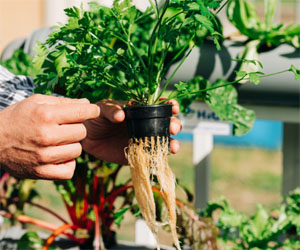 Soil Conditions: Soil quality, structure, and composition significantly affect root health. Well-draining, aerated soil with an optimal balance of organic matter and nutrients is crucial for healthy root development.
Soil Conditions: Soil quality, structure, and composition significantly affect root health. Well-draining, aerated soil with an optimal balance of organic matter and nutrients is crucial for healthy root development.
Nutrient Availability: The availability of essential nutrients, such as nitrogen, phosphorus, and potassium, is essential for root growth. Imbalances or deficiencies can impede root health.
Water Management: Both under- and overwatering can harm roots. Consistent and appropriate watering practices are essential for root vitality.
Disease And Pests: Pathogens and pests can damage roots, leading to root rot or other diseases. Proper plant health management is crucial for preventing such issues.
Aeration: Oxygen is vital for root respiration. Compacted soil or waterlogged conditions can deprive roots of oxygen, leading to poor health.
Temperature And Climate: Extreme temperatures and environmental conditions can stress roots. Plants adapted to specific climates are more likely to have healthier roots.
Implications Of Root Health
Root health has far-reaching implications for plant growth, crop yield, and ecosystem stability:
Enhanced Nutrient Uptake: Healthy roots efficiently absorb essential nutrients, leading to better growth and crop production.
Drought Tolerance: Robust root systems improve a plant's ability to withstand periods of drought by accessing water from deeper soil layers.
Pest And Disease Resistance: Healthy roots are better equipped to defend against pathogens and pests.
Erosion Control: Plant roots stabilize soil and prevent erosion, preserving valuable topsoil.
Environmental Sustainability: A network of healthy roots contributes to ecosystem stability, enhances soil quality, and reduces the need for synthetic fertilizers and pesticides.
Exploring Soil-Based Farming
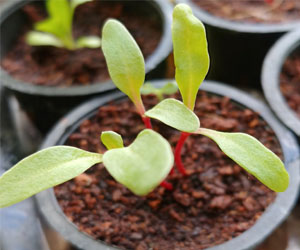 The Essence Of Soil-Based Farming
The Essence Of Soil-Based Farming
Soil-based farming is the conventional practice of growing crops and raising animals directly in the natural ground, without the use of hydroponics, aquaponics, or other soilless methods. It relies on the fertility and nutrient content of the soil to support plant growth, and it has been the cornerstone of human agriculture since the dawn of civilization.
The Natural Nutrient Cycle
Soil-based farming taps into the natural nutrient cycle of the Earth. Organic matter, decaying plants, and animal waste enrich the soil with essential nutrients such as nitrogen, phosphorus, and potassium. These nutrients are absorbed by plants, providing the foundation for growth. Soil acts as a reservoir, storing water and nutrients, which are gradually released to plants as they need them. This natural cycle fosters a self-sustaining and ecologically friendly agricultural system.
Advantages Of Soil-Based Farming
Nutrient-Rich Soil: Over time, well-managed soil-based systems accumulate organic matter and nutrients, enhancing soil fertility.
Crop Diversity: Soil-based farming supports a wide range of crop varieties, catering to diverse dietary needs and regional preferences.
Sustainability: It promotes ecological balance by maintaining soil health and supporting diverse microbial life in the soil.
Cost-Efficiency: Soil-based farming often requires less initial investment compared to high-tech alternatives like hydroponics.
Resilience: Soil-based systems are more resistant to power outages or equipment failures, ensuring consistent food production.
Challenges And Adaptations
While soil-based farming has been a cornerstone of agriculture, it's not without its challenges. Soil erosion, nutrient depletion, and water pollution are concerns that require attention. In response, sustainable farming practices like crop rotation, cover cropping, and reduced tillage have been adopted to mitigate these issues. Modern soil testing and precision agriculture technologies also help optimize nutrient application.